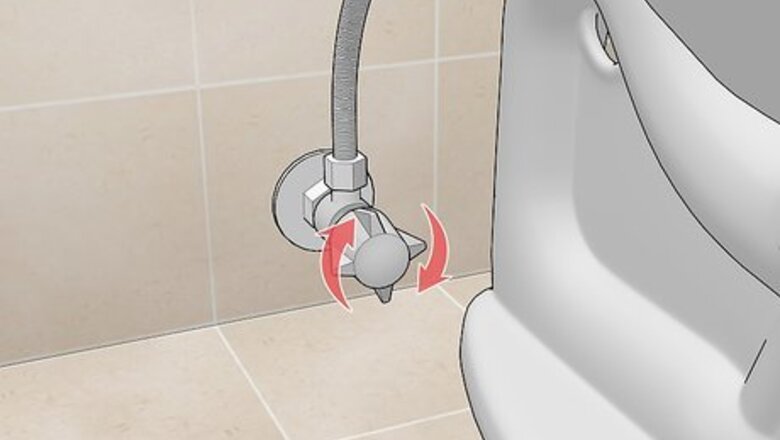
views
- Turn the knob on your toilet's hose counterclockwise to cut off the water supply, then hold down the flush lever to completely drain the tank.
- Remove the supply hose and loosen the bolts inside the tank. Then lift the tank from the toilet. Add the tank gasket to the large bottom hole in the new tank.
- Place the new tank on the toilet and tighten the bolts inside the tank, adding gaskets to each before you do. Then reattach the hose and open the water supply with the valve.
Removing the Old Tank
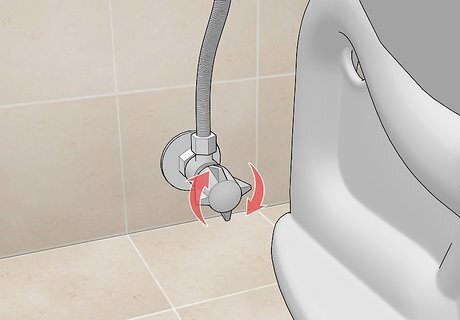
Turn off the water supply for the toilet. Locate the metal valve on the wall that has a hose that connects to the bottom of your toilet’s tank. Turn the handle counterclockwise as far as you can so the water can’t run into your toilet tank anymore. Once the water is turned off, you can start working on your toilet tank.

Hold the flush lever down to drain the tank. Take the lid off of the toilet tank and set it on a towel so it doesn’t scratch your floors. Hold down the lever on the side of the toilet to flush it and drain the water. Wait until all of the water drains out from the tank before letting go of the lever. If there’s still some water at the bottom of your toilet tank, soak it up with a sponge or cleaning cloth so it doesn’t drip out when you remove it. If the tank starts refilling as soon as you stop flushing it, then you didn’t turn the water supply off completely. Make sure the valve is turned completely counterclockwise or else water will still leak through.
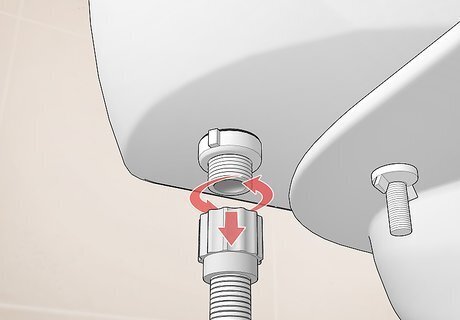
Unscrew the supply hose from the bottom of the tank. The supply hose is a metal or plastic tube that connects from the water valve on the wall to the bottom of your toilet tank. Unscrew the end of the hose connected to the tank to remove it from the tank. If you can’t unscrew the supply hose by hand, use a pair of pliers or a wrench to get a better grip. There may still be some water left inside the hose or in your tank, so keep a towel or bucket nearby to catch any spills.
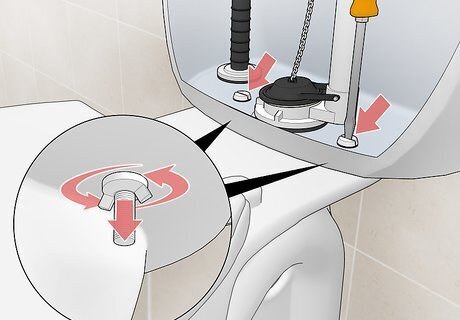
Loosen the bolts from inside the tank with a screwdriver. Locate the ends of the bolts outside of your tank on the bottom and grip one of the nuts with a pair of locking pliers. Reach a screwdriver inside the tank with your other hand and turn the bolt heads counterclockwise. As you rotate them, the nuts will come loose underneath the bolts and you can pull the bolt up through the tank. Repeat the process for the rest of the bolts in the tank. Toilet tanks usually have 2-3 bolts that secure them onto the bowl.Tip: If the bolts holding your tank in place are rusty, guide a hacksaw blade in the crack between the tank and the bowl on the outside of the tank to saw through them. Be careful when handling the saw blade so you don’t accidentally cut yourself.
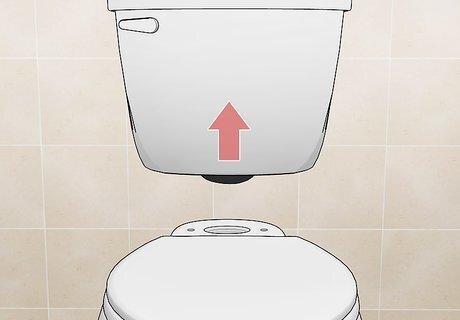
Lift the tank off of the toilet bowl. Grab the tank from the bottom with both hands and carefully lift it up. Be sure to lift straight up off of the bowl so you don’t damage it or drop any of the flush valves inside the tank. Set the tank aside on a towel for now so you don’t scratch your floors. Contact your local waste management facility to find out how to properly dispose of your tank. You do not need to save the flush mechanisms from your old tank since the new tank will come with them.
Installing the New Tank
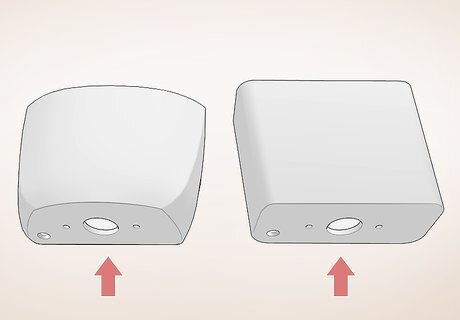
Get a tank that matches the size of your toilet bowl’s gasket. The toilet gasket is the main hole where water travels from the tank into the bowl. Measure the size of the gasket on your toilet bowl with a tape measure so you can buy a tank that has the same size hole. Make sure the color of the tank matches the bowl or else your toilet won’t look cohesive. Many hardware or plumbing stores have universal toilet tanks that you can use on any type of bowl. Otherwise, you may have to buy a tank that matches the exact model of toilet you have.

Push the tank-to-bowl gasket onto the bottom of the tank. The tank-to-bowl gasket is a rubber ring that comes with your tank when you buy it. Lay a towel out on the floor and turn your new tank on its side so you can access the bottom of it. Push the gasket onto the largest hole on the bottom of the tank so it forms a tight seal. If your tank doesn’t come with a tank-to-bowl gasket, then you can buy one that’s the same size as the toilet tank’s hole from your local hardware store.

Slide a rubber washer onto each of the tank bolts. Your tank will come with all the bolts and washers you need to install it on your bowl. Find the rubber washers provided with the tank and push 1 onto each bolt. Make sure the washer is pressed tightly against the top of the bolt so it forms a seal and prevents leaks. Some toilet tanks may have large rubber pieces that you push into the holes on the bottom of your toilet tank rather than use rubber washers. Consult with your tank’s installation manual to see if any pieces install differently.
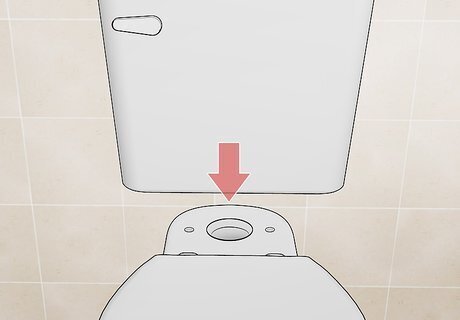
Set the tank on top of the toilet bowl so the holes line up with one another. Carefully lift the tank with both hands and set it on the back part of the toilet bowl. Position the tank so the gasket lines up with the large hole in the back of the bowl. Then check that the bolt holes line up so you can easily slide the bolts through them. Hold the tank in place so it doesn’t slip or fall before you secure it. Be careful not to move the tank around too much after you set it on the bowl so you don’t accidentally scratch either piece.
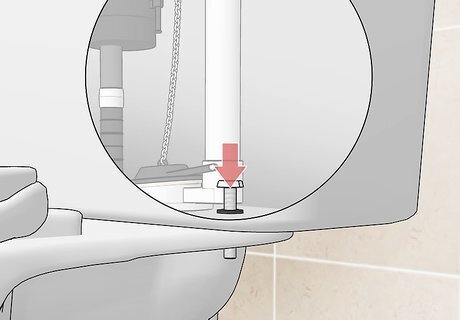
Feed the bolts from the inside of the tank through the holes in the bottom. Hold onto the tank with one hand and guide the bolts through the holes inside the tank. Press down on the tops of the bolts so they form a tight seal with the rubber washers and the bottom of the tank. Keep supporting the tanks so it doesn’t lean and damage your toilet bowl. Make sure the rubber washers are on the inside of the tank when you put in the bolts or else your toilet will leak when it fills up. Some tanks have another set of rubber washers you need to put onto the bolts after you place them through the tank. Not every toilet tank will have another set of washers.
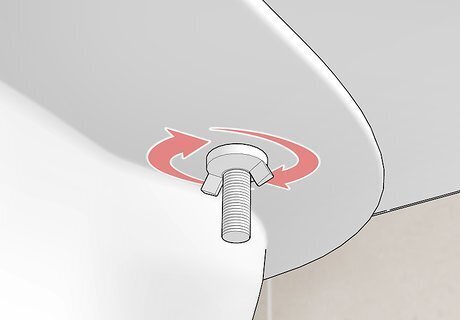
Tighten a nut onto each bolt to hold the tank in place and make it level. Guide a washer onto each of the bolts from underneath the tank so you don’t damage or crack it. Screw the nuts provided with the tank clockwise onto each of the bolts until they are hand tight. Use a wrench or a pair of locking pliers to tighten the nuts until they cannot easily turn anymore. Check the tank with a level to make sure it’s not leaning or tilting. If the tank is leaning, then loosen or tighten one of the nuts holding it in place before checking if the tank is level again.Warning: Be careful not to overtighten the nuts on the tank since you could crack your toilet and cause a leak. If the nut is difficult to turn, don’t try to force it any tighter.
Filling the Tank
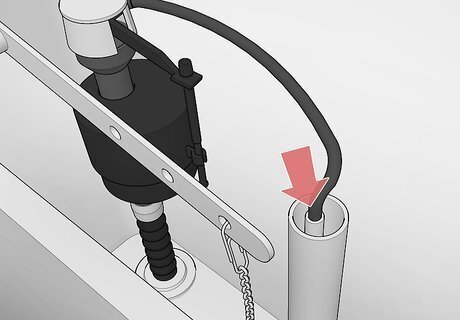
Clip the refill hose to the top of the flush valve. The refill hose is a small plastic tube inside the tank attached to the top of the flush mechanism. Locate the refill hose and clip it onto the side of the flush valve, which is the tall column in the middle of your toilet tank or on the right side of your tank. Check the installation manual for your tank to see exactly how it attaches to the model you’re using. Every refill hose and flush valve will connect differently depending on the tank you have.
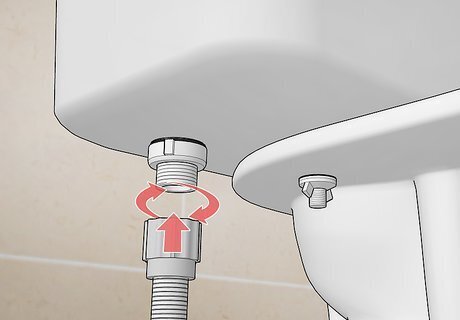
Screw the supply hose onto the bottom of the tank. Take the end of the supply hose and find the port on the bottom of the tank where it connects. Screw the supply hose clockwise onto the threading for your tank and continue turning it until it’s hand tight. Be careful not to overtighten the supply hose or else you could crack the tank. You can use the same supply hose that was attached to your other tank.

Turn on your water supply to fill the tank with water again. Rotate the water valve for your toilet clockwise so the water starts running again. As soon as you turn the water back on, your toilet tank will start to immediately fill. Watch the water rise inside the tank to make sure the flush mechanisms all work properly. Check the area around the bolts, supply hose, and gasket to see if there are any leaks from your tank. If not, then put on the lid to finish. If the toilet tank is leaking, turn off the water supply and drain it again. Try tightening the bolts and supply hose slightly to see if it fixes the problem. If the toilet is still leaking, you may need to contact a plumber to look at the toilet for you.


















Comments
0 comment